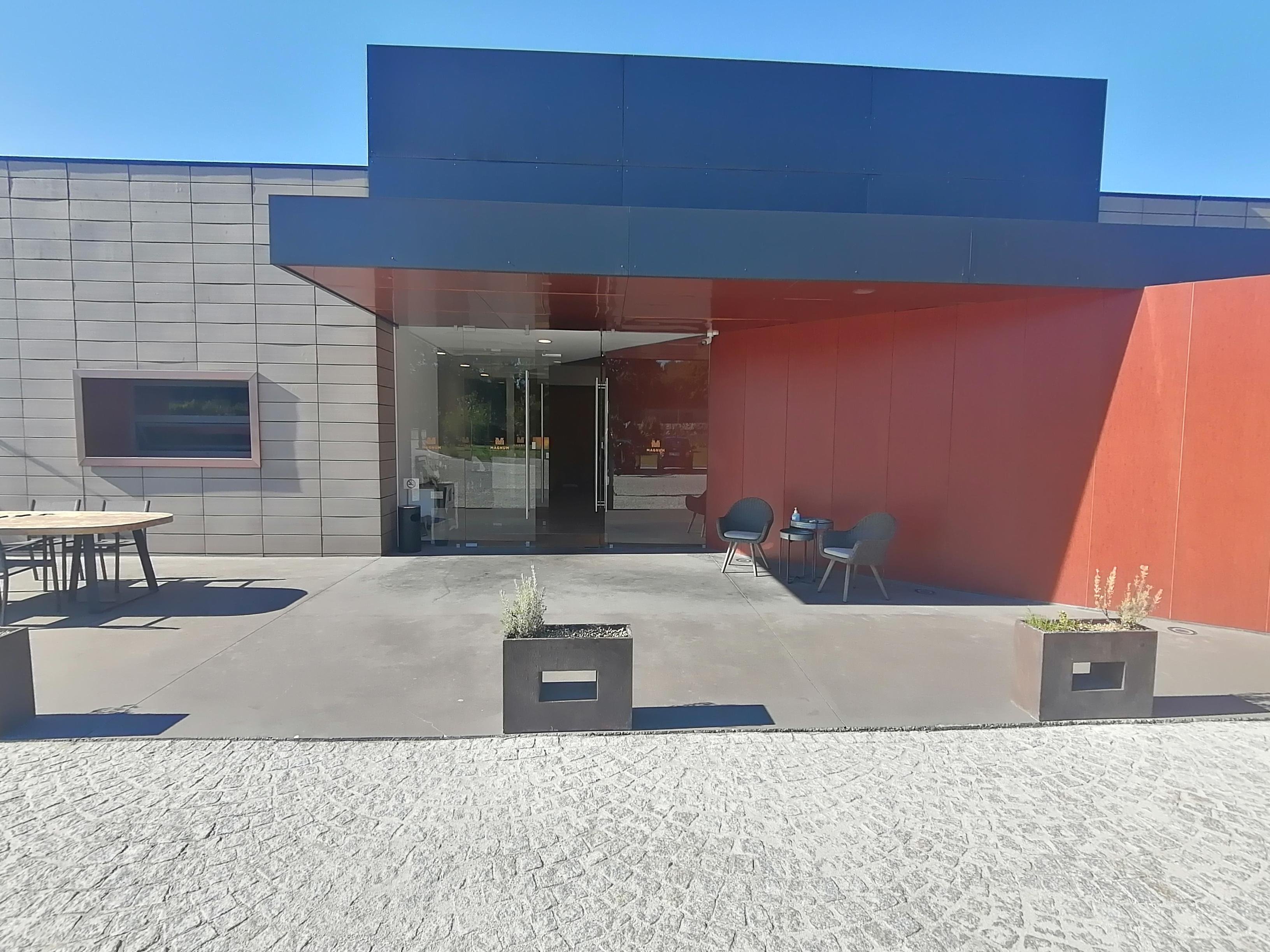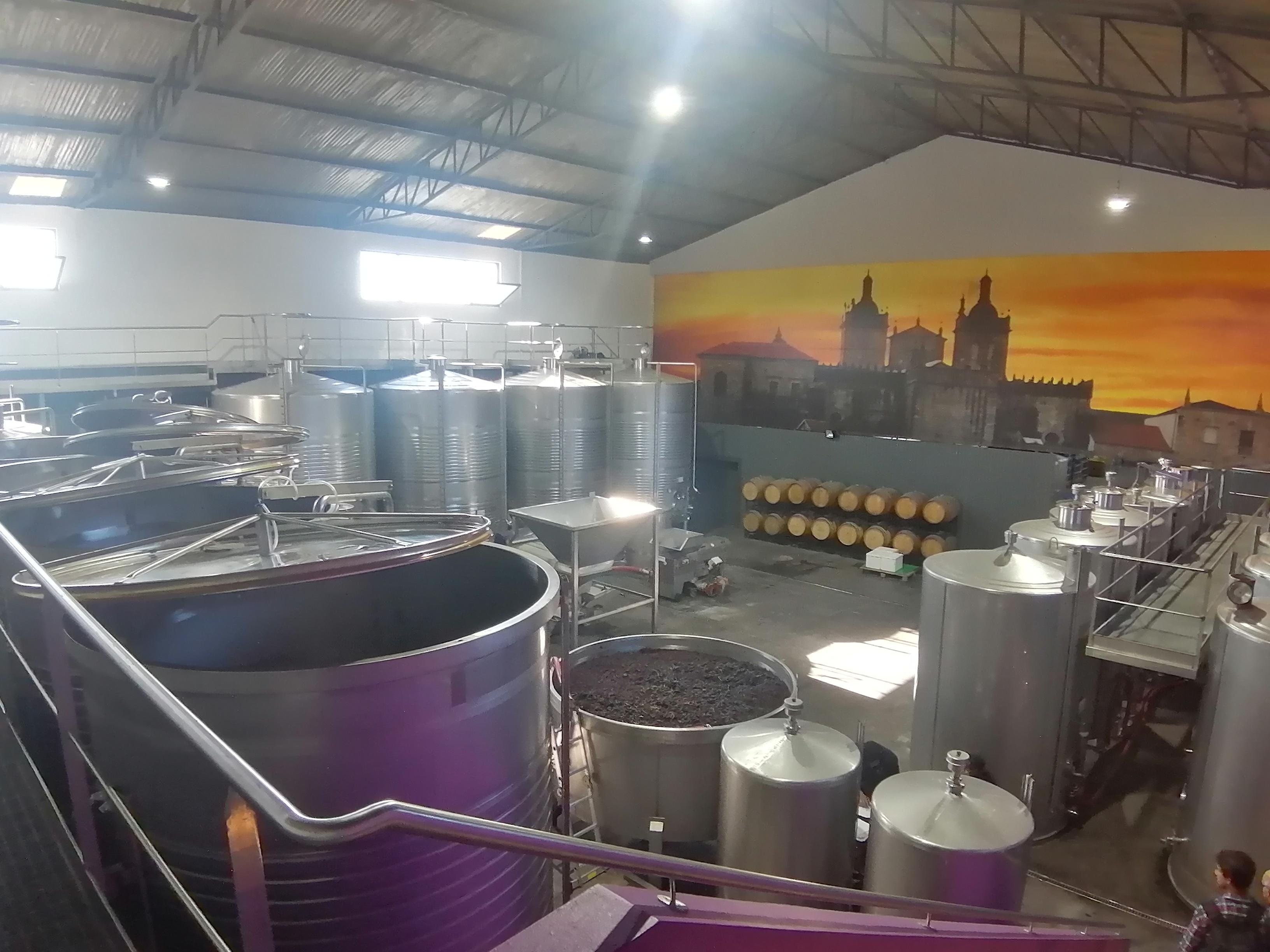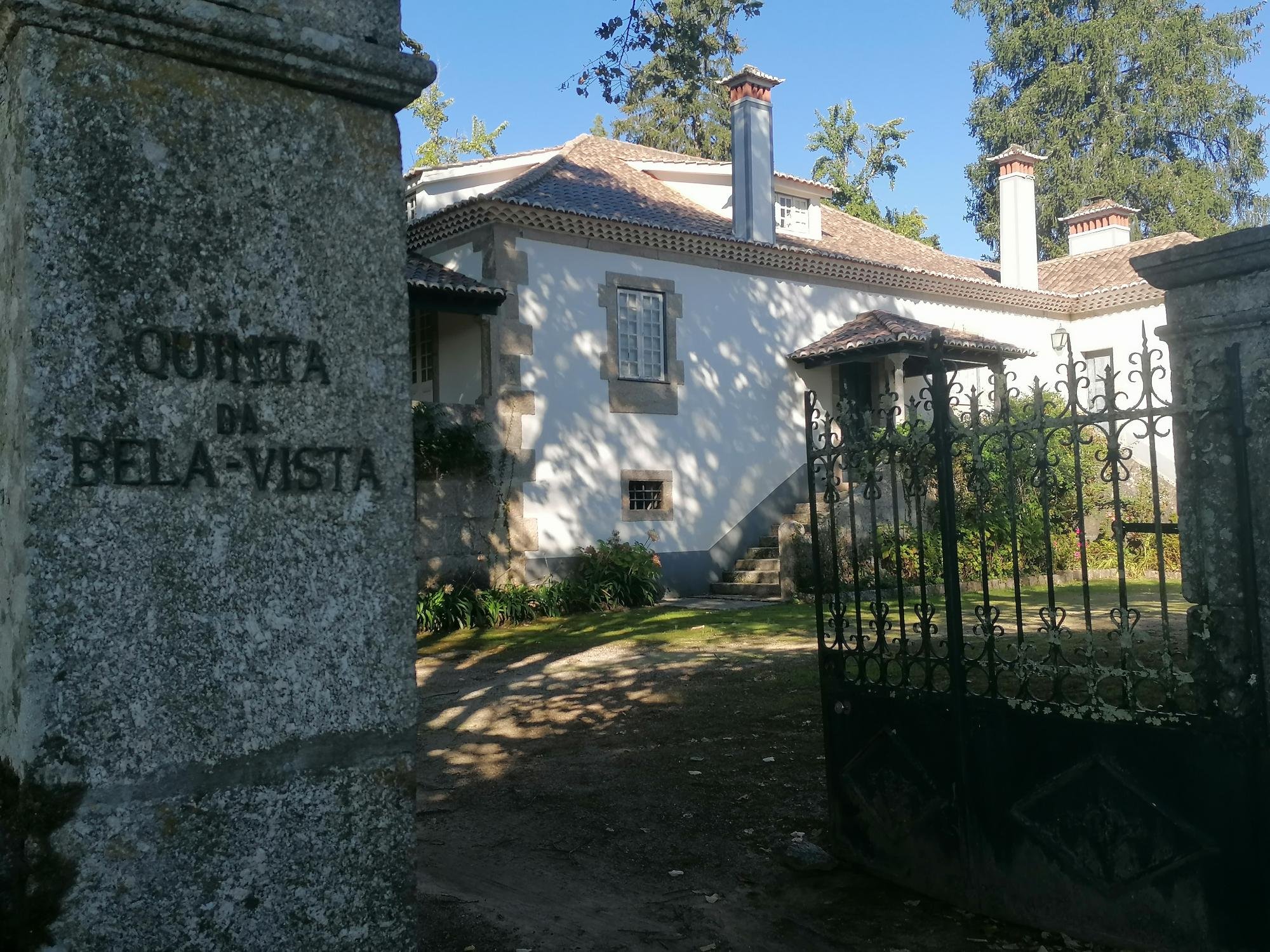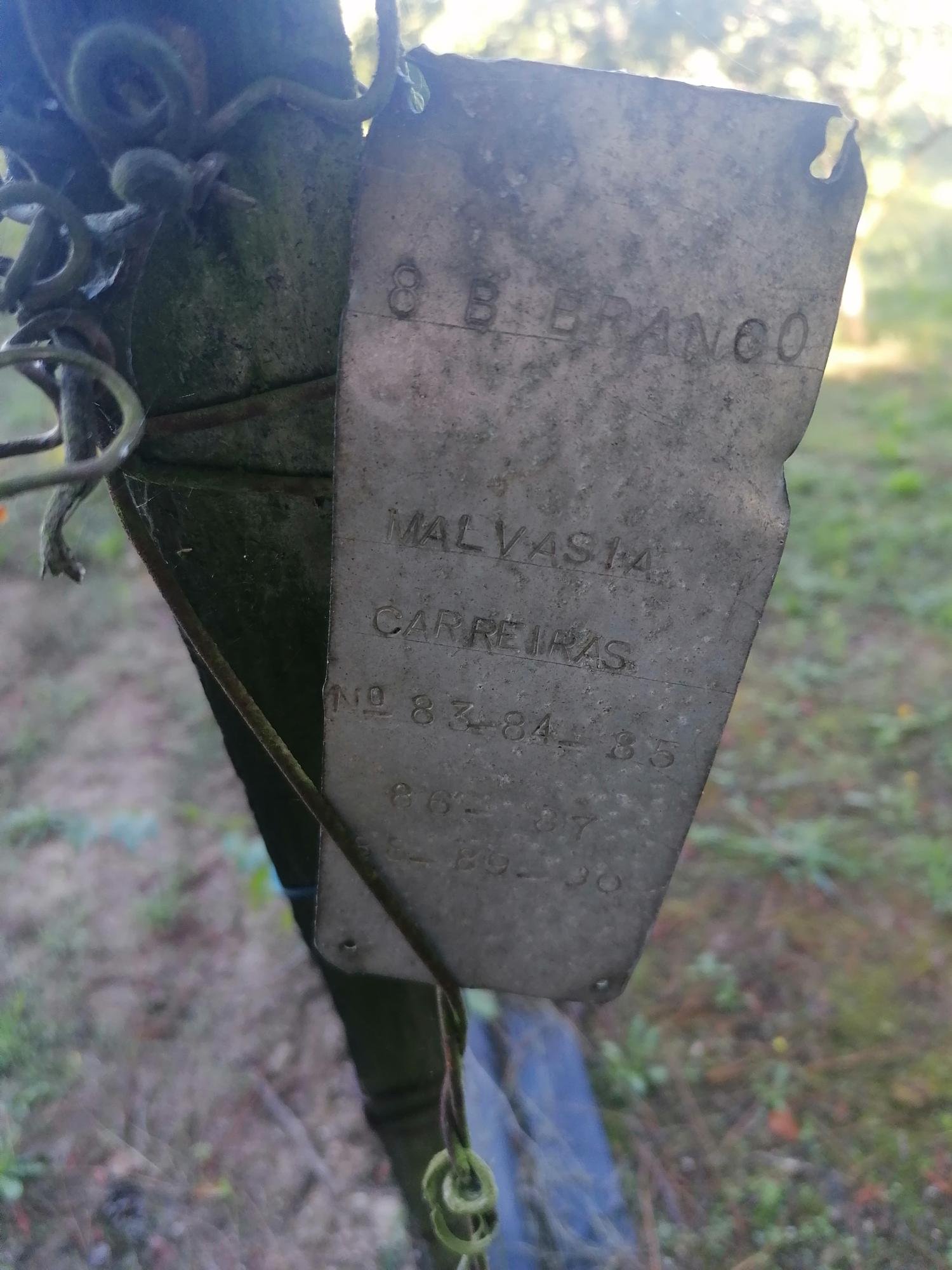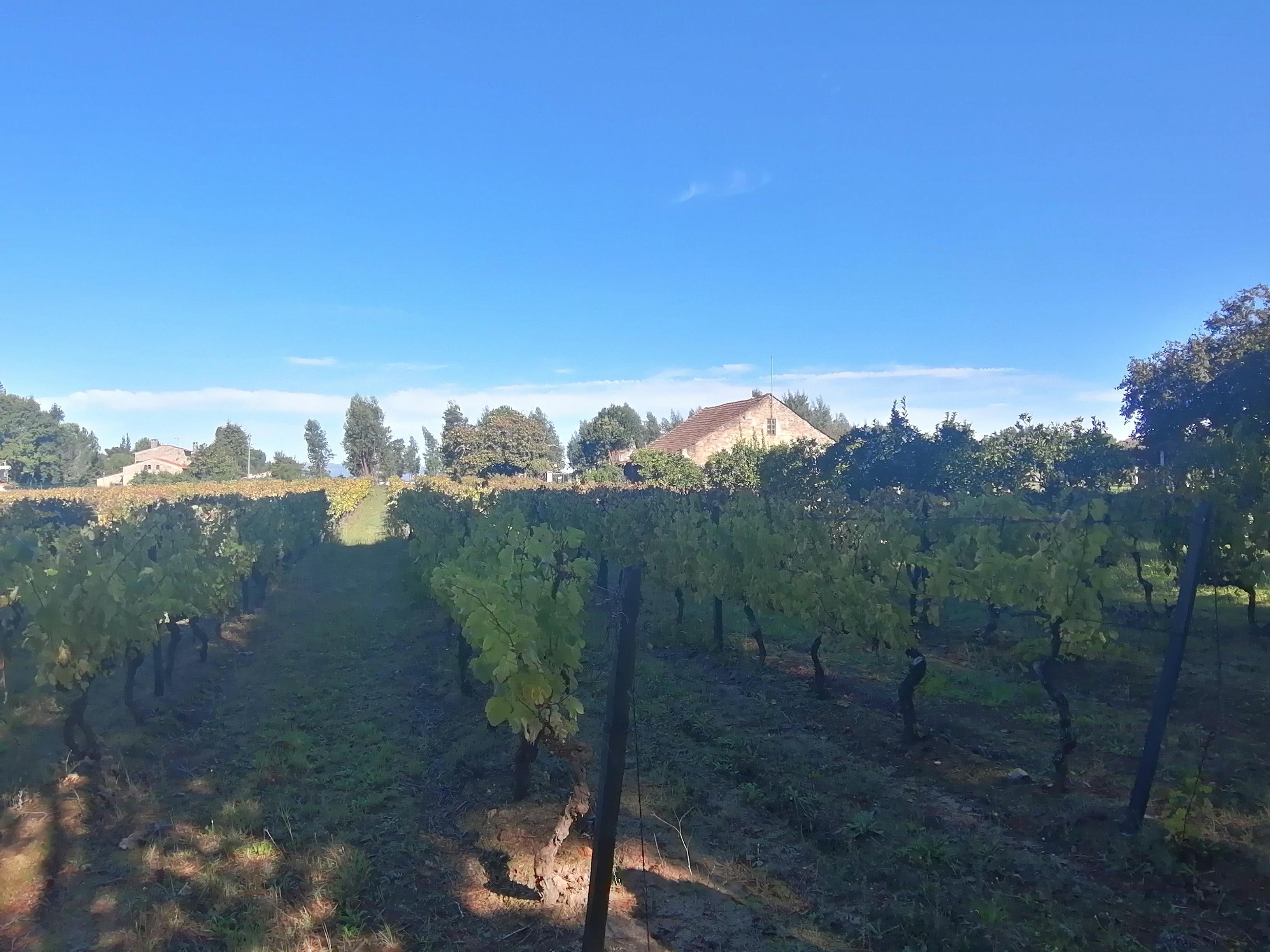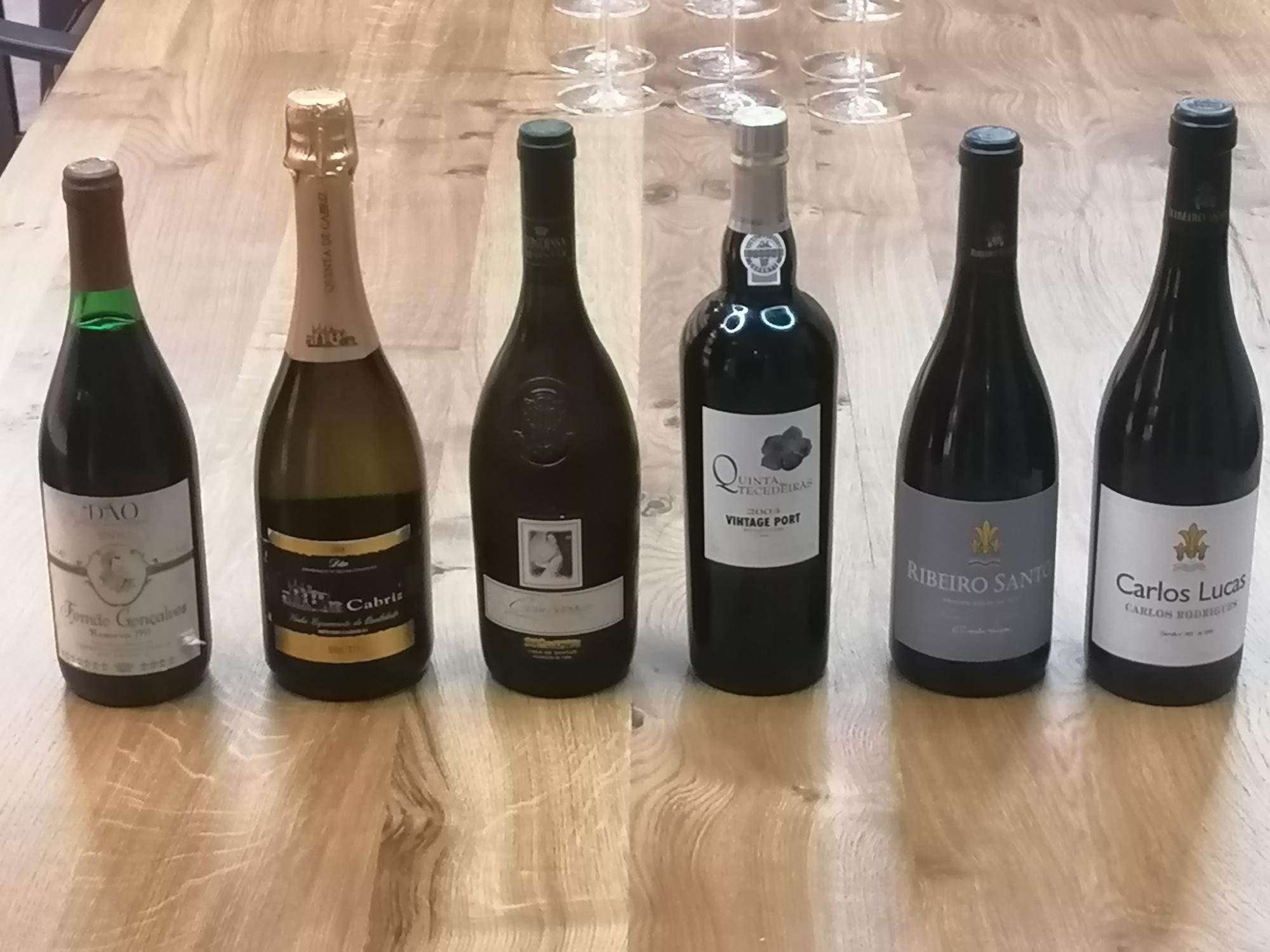Today was well worth getting up early to meet oenologist Carlos Lucas at his headquarters, Quinta do Ribeiro Santo. Located in the heartland of the Dão, near Carregal do Sal, it is now only one of several estates from which he crafts and manages one of the most diverse and interesting portfolios in the region. Today the pretext was the 30th anniversary of his work in the wine industry - his 30th harvest, in a nutshell.
We started with a short trip to the neighboring Quinta da Bela Vista, a handsome recent purchase which included 60 year old vines in several varieties of both colors, currently being revived (the name tags at the front of each row are original!). Carlos Lucas’ plan is to expand on the concept of terroir wines highlighting the differences between each propriety - the logic of the ‘Clos’, as he calls it - in soil composition, exposure and other factors. To the naked eye, though, Bela Vista’s vineyards are nothing but quintessentially Dão, surrounded as they are by the forest and decorated by stern old granite houses.
The lineup he offered for lunch (gorgeous ‘presunto pata negra’ and codfish) consisted of wines that marked the first 30 years of his winemaking career. We started with the 2008 Cabriz espumante, one of the first mainstream bubbles in the region, which has aged splendidly well for such an inexpensive first effort - fine acidity, somewhat short finish but also a nicely evolved nose of ripe citrus and brioche. The 2006 Condessa de Santar was a step up in intensity: this was created as the white foil to the well known Conde de Santar label (which at the time only carried reds), and supposedly came about as a specific request from the then octogenarian countess of Santar, whose youthful picture appears on the label. This had a beautiful, healthy golden yellow color and riveting acidity, with an enveloping, complex nose marked by lees aging (‘all of them, not just the fine ones!’, he explained) intertwined with shades of oak spice, lemon balm and beeswax. This was the perfect foil for the cod.
We checked in on his very first red, a 1991 Reserva he baptized as Fernão Gonçalves (a well known historical figure of the region) while working for the agricultural cooperative in Nelas. This is most definitely a product of its day, and a piece of History: Portugal had joined the EU five years before, European funds were rolling in, and, for the first time, the large cooperatives which had dominated the national wine industry for decades were forced to hire oenologists - a strikingly new concept when winemaking up to that point had been directed by agricultural engineers who knew virtually nothing of the craft. As was common back then, this was rapidly and intensely pressed for maximum extraction and aged in unprotected granite vats sprayed with tartaric acid - barrels were unheard of - with its ferrous notes likely pointing to a degree of cellar contamination. Acidic and bitter, with grainy tannin, this is not yet a portrait of the coming national wine revolution, but more the snapshot of a paradigm that was just beginning to be abandoned - thanks to people like Carlos Lucas himself, who at that time couldn’t have done much about the yield maximizing viticulture of the day, along with other limitations (he received a scolding from his supervisors for designing and printing the wine’s labels at the co-op’s expense in a specialized Porto house. Who cared about presentation?).
I was happy and relieved when we moved on to more modern wines (can’t believe I just said this on WB). The 2011 Ribeiro Santo Grande Escolha is a bruiser: dense, chewy, portly though never quite jammy, it remains stubbornly primary and wears its 95 WA points (a first for the Dão at the time) on its sleeve (this little factoid was accompanied by the story of how Mark Squires once sat down for lunch at Ribeiro Santo, put the napkin on his lap, looked at the plate of soup in front of him and refused to eat).
The 2015 Carlos Lucas & Carlos Rodrigues, a celebration of Carlos Lucas’ 20+ year partnership with his oenologist right-hand man, was somehow a step up in both intensity and elegance. This was packed with luscious, almost extravagant fruit - sweet yet fresh - silky tannin, beautifully palate coating acidity - the kind that feels multidimensional - and a potpourri of forest descriptors which somehow placed us in the territory of charm, balance and precision rather than in a winemaker’s technical manual, all tied together with a ribbon of endless length without heaviness. It was like tasting the Dão on steroids, and I certainly relished in the hedonism of it. Wine of the afternoon and one of my WOTY so far - this could be utterly legendary at some point in the future.
We had the chance to sample an even more limited edition wine, and a fascinating one at that: the 2003 Pião (the Portuguese word for whipping top) is a play on words, as it is also named after a portmanteau of Piedmont and Dão. Carlos Lucas befriended Italian winemaker Marco Dotta in Brazil, in one of São Paulo’s international fairs, and the two ended up joining efforts in a transnational wine, an unlikely blend of 50% Nebbiolo and 50% Touriga Nacional. I was skeptical of the result of such a blend and yet was not disappointed in the slightest: insanely youthful for an 18 year old wine, this essentially had the acidity and texture of Nebbiolo combined with the color and aromatic profile of Touriga Nacional, despite a few hints of more reddish fruit reminding you of the blend’s Piedmontese half. I have no idea what the logistics of this wine’s production process were like, and I have no idea whether I could trace down and identify every component and descriptor of its incredibly complex profile, but one thing Carlos Lucas swore by - ‘this is much rarer than Petrus!’. Personally a close second behind the CL & CR, as it was ultimately more intellectually fascinating than downright delicious.
We wrapped up our lunch with a delicious almond pie and two fortifieds. The 2003 Tecedeiras Vintage Port (the Douro’s Quinta das Tecedeiras is a Global Wines propriety, where Carlos Lucas was head winemaker) represented a dilemma when it was released: rounded and elegant right from the day it was released, he wondered whether it had the stuffing to age for two or three generations, as the greatest VPs are known to do. This was particularly anxiety inducing for a winemaker who had once dreamed of making Port the focus of his work! Yet his concerns appear to be unfounded so far, since the wine remains elusively young while preserving all of that elegance intact (‘it basically hasn’t budged’, Carlos Rodrigues said). All that distinguished it from a truly young, primary VP was the exquisite balance between the sweet fruit and the more savory and herbal elements.
We finished off with a round of Blandy’s 1976 Verdelho, a lightning storm of acidity, rancio and orange marmalade which screamed ‘Madeira’ into a loudspeaker. Loosened up by the alcohol, our host then proceeded to comment - rather incisively too - on fellow winemakers from the Dão, from other domestic regions and even from Bordeaux, his French wine education notwithstanding. These I should preferably not reproduce here!
